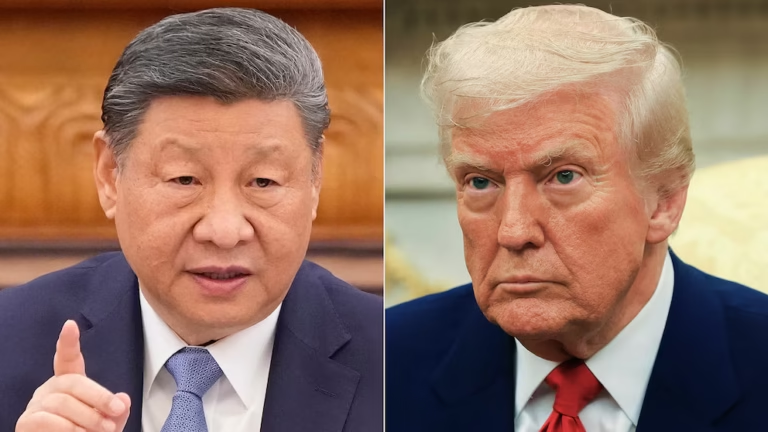For years, the prevailing narrative in the West was that stringent U.S. sanctions would effectively cripple China’s technological ambitions, particularly in the critical field of advanced semiconductors. The strategy was clear: by cutting off access to cutting-edge chip design and manufacturing technology, China’s progress would be frozen in time. Yet, the reality unfolding in 2025 tells a different, more complex story—one of surprising resilience and state-driven ambition, spearheaded by tech giants like Huawei and Xiaomi.
This Geeks Economy deep dive analyzes how China responded to the technological siege not by capitulating, but by catalyzing a massive internal push for self-sufficiency. It’s a story of corporate pivots, national strategy, and the potential fracturing of the global tech ecosystem.
The Sanctions Shockwave: A High-Stakes Bet
The United States, along with its allies, implemented a series of comprehensive export controls aimed at preventing China from acquiring or producing high-end semiconductors essential for advanced AI, supercomputing, and military applications. The logic was sound: without access to key equipment from companies like ASML (for EUV lithography) and design software from U.S. firms, China’s chip industry would hit a hard ceiling.
This move was a high-stakes bet on the West’s technological supremacy. The initial shock to the Chinese tech sector was undeniable, with companies like Huawei seeing their global smartphone market share plummet. However, the long-term effect was not what many in Washington had anticipated.
The “National Champions” Strategy: Huawei and Xiaomi’s Massive Pivot
Instead of folding, Chinese tech titans, backed by state support, pivoted with incredible force.
- Huawei’s Defiant Comeback: Huawei is the prime example. The company reportedly poured over $20 billion into its R&D budget, reorienting its massive engineering talent toward a single goal: designing and producing a competitive, domestically-sourced chip. This culminated in the development of their advanced Kirin chipset series. The ability to produce a 7-nanometer (7nm) chip in partnership with Chinese foundry SMIC, used in their latest smartphones, sent shockwaves through the industry. It was a clear signal that China had found a way to produce relatively advanced chips despite the sanctions.
- Xiaomi’s Strategic Investments: While Huawei focused on high-end processors, Xiaomi has been playing a different, equally important role. The company has made significant investments across China’s broader semiconductor ecosystem, from chip design startups to manufacturing facilities. This strategy helps to build a robust domestic supply chain, ensuring that a wider array of components—from power management chips to display drivers—can be sourced locally. This “base-building” is crucial for the long-term health and resilience of the entire industry.
The State-Driven Ecosystem
It’s a mistake to view this progress as the result of just two companies. The efforts of Huawei and Xiaomi are the visible tip of a massive, state-orchestrated industrial policy. This strategy involves:
- Massive Financial Investment: Beijing has funneled tens of billions of dollars into a “National Integrated Circuit Industry Investment Fund” (often called the “Big Fund”) to subsidize research, development, and factory construction.
- Fostering a Domestic Supply Chain: The government is nurturing local players in every part of the chip-making process, from electronic design automation (EDA) software to the chemical gases and wafers used in manufacturing.
- Techno-Nationalism: The sanctions have fueled a powerful sense of national purpose. “Self-sufficiency” in technology is no longer just an economic goal; it’s a matter of national security and pride, driving intense focus and collaboration between government, academia, and private industry.
The Hurdles That Remain
While China’s progress is undeniable and impressive, a data-driven reality check is essential.
The breakthroughs, like the 7nm Kirin chip, are significant but still lag several generations behind the cutting-edge 3nm chips produced by industry leaders like TSMC and Samsung. Furthermore, this progress has likely been achieved at an enormous cost and with lower manufacturing yields.
The most critical bottleneck remains EUV lithography. China still does not have access to the advanced Extreme Ultraviolet (EUV) machines produced by the Dutch company ASML, which are essential for manufacturing chips at 5nm and below. While Chinese companies are making progress with older DUV (Deep Ultraviolet) lithography techniques, breaking through the EUV barrier remains the single biggest challenge to reaching the absolute cutting edge.
A New, Fractured Tech Landscape
The attempt to halt China’s technological progress through sanctions appears to have had the unintended consequence of creating a formidable, self-reliant competitor. The narrative is no longer about whether China can build an advanced chip industry, but how quickly it can close the remaining gaps.
For the global economy, this points toward a future of increasing technological decoupling. We are likely heading towards a world with two parallel and competing tech ecosystems, each with its own standards, supply chains, and spheres of influence. This fracturing presents both immense risks and new opportunities. For the geeks of the economy, it’s a fascinating, high-stakes game of strategy, innovation, and national ambition that will redefine technology and geopolitics for decades to come.


